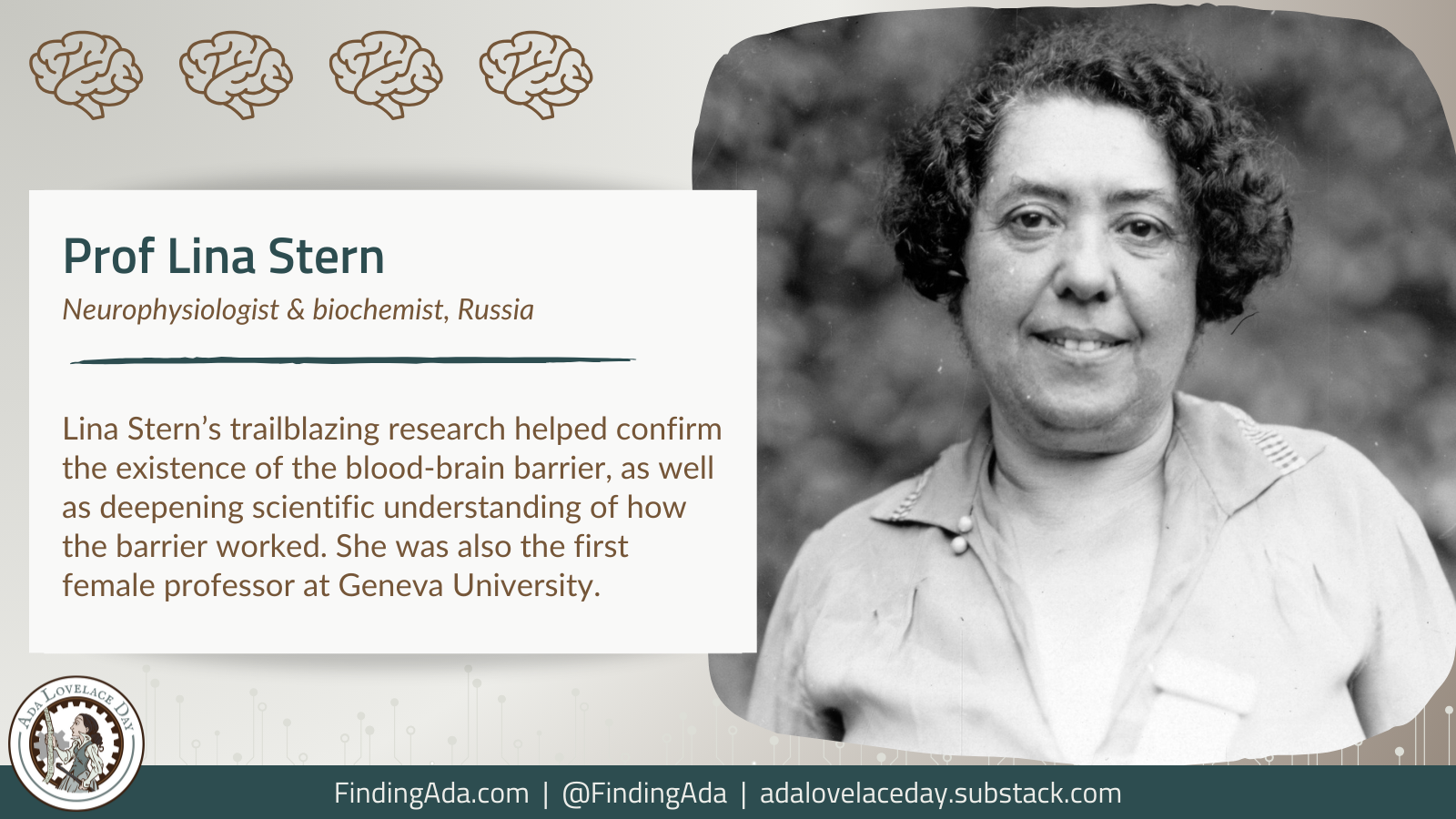Professor Lina Stern
Professor Lina Solomonovna Stern, Лина Соломоновна Штерн, was a Russian biochemist and neurophysiologist. A world-renowned scientist during her lifetime, she was one of the first researchers to identify what is now known as the blood-brain barrier, and conducted pioneering research on the central nervous system.
Stern was born on 26 August 1878 in Libau in the Russian Empire (today part of Latvia). She dreamed of becoming a doctor, but was denied entry to Russian universities due to her Jewish heritage. Aged 20, she moved to Switzerland and embarked on a medical degree at the University of Geneva, graduating in 1903.
Not long after completing her medical training, Stern took an assistant job in the university’s physiology department, where she pursued original research in biochemistry and neuroscience. With physiologist Frédéric Battelli, she published more than 50 papers on subjects including the effects of electrical discharge on the heart and the physiology of blood.
Particularly notable was Stern and Batelli’s work on respiratory enzymes, which has been recognised as groundbreaking by generations of scientists. Decades before the British biochemist Hans Krebs identified the citric acid cycle (a series of chemical reactions that release stored energy through the oxidation of a particular molecule), Battelli and Stern’s experiments had revealed many key steps in the process. When Krebs received a Nobel Prize for his work in 1953, he paid tribute to Stern and Batelli.
In 1918, Stern became a physiological chemistry professor at the University of Geneva – the first woman to hold such a post in any department at the institution. She was increasingly interested in the physiology of the central nervous system, particularly what is now known as the blood-brain barrier (BBB). Between 1918 and 1925, Stern co-authored several studies that demonstrated the existence of what she called the “hematoencephalic barrier”. While previous scientists had proposed the concept of the BBB, Stern’s experiments played a vital role in confirming its existence.
Stern returned to the USSR in 1925, having been invited to lead the physiology department at the Second Moscow State University. There, she organised scientific laboratories and continued her research, publishing 49 journal articles in three years. In 1929, she founded the Russian Institute of Physiology, where groups of scientists continued to investigate the BBB, among other subjects. A landmark paper by Stern in 1934 showed that the BBB selectively allows certain substances to enter while protecting the inside of the brain, today recognised as two of the barrier’s main functions.
Stern’s research was not limited to the BBB. In 1939, she proposed injecting potassium phosphate into the scalp (known as suboccipital injection) to address traumatic shock, a controversial treatment used during World War II to help wounded soldiers. She later used suboccipital injection to provide patients with a new medication for tuberculosis meningitis (TBM). This approach proved relatively successful in aiding recovery from what had previously been considered an incurable disease, and Stern and colleagues received a patent for TBM treatment.
Several years in Stern’s later life were hard. Increasing hostility to Jewish people in the USSR following World War II saw her expelled from all her scientific posts. In 1949, she was exiled to Kazakhstan for five years – a result of her involvement with anti-fascist committees associated with scientists and women.
However, after the death of Joseph Stalin, Stern returned to Moscow and led the physiology department at the Institute of Biophysics for 15 years. In a 1958 review of BBB studies, she left a dry acknowledgment of her time in exile: “Our scientific research was interrupted in 1948.” She worked in science until her death on 7 March 1968, aged 89.
Further Reading
- Lina Stern, Wikipedia
- Lina Stern (1878–1968): an outstanding scientist of her time, Levent Sarikcioglu, Child’s Nervous System, 1 April 2017
- Science and Fate: Lina Stern (1878–1968), A Neurophysiologist and Biochemist, Alla Vein, Journal of the History of the Neurosciences, February 2008
Written by Moya Crockett, with thanks to Stylist for their support.
